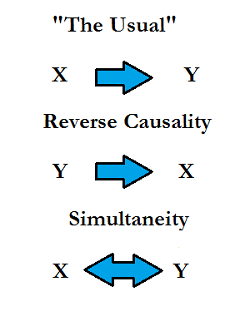
Practically, establishing a correlation is easier than establishing a clear causal relationship. In this case, the relationship is causal because there is a direct relationship between the employee and the money earned by him (and how he earns it).Ĭausality is more accurate than correlation, since correlation is simply a description of entities that change at the same time. Someone who works late and earns more money than a person who doesn’t.

These conditions are related to the time of precedence, relationship and knowledge or experience.Īn example of a causal relationship is as follows: Three conditions must be true to claim that such a thing is the cause of something specific. One tends to derive this inference from correlation data. It is transitive in nature, meaning that if A is the cause of B and B is the cause of C, then A is the cause of C. However, this does not imply that the demand is due to the increase of the price or that the price has as only possible cause the increase of the demand since the price could be increasing because the raw material is also more expensive or any other factor.Ĭausality helps determine the existence of a relationship between variables. However, both demand and price are entities different but in this case they are varying together. The demand for a product rises, so its price also tends to rise. An example of positive correlation is as follows: On the other hand, in a negative correlation, frequencies exhibit inverse characteristics (one variable increases and another decreases). But it can be worth it.A positive correlation is one in which if the frequency of one variable increases, then the same change is reflected in the other. But generally, good instrumental variables will not be easy to find - you will have to think creatively and really know your data well to uncover them.

I got lucky that there was a feasible instrumental variable to use. The Value of Determining Causality Causation is never easy to prove. there is a causal relationship between the two events. Causation indicates that one event is the result of the occurrence of the other event i.e. How do you know if its correlation or causation?Ī correlation between variables, however, does not automatically mean that the change in one variable is the cause of the change in the values of the other variable. This is why we commonly say “correlation does not imply causation.” However, seeing two variables moving together does not necessarily mean we know whether one variable causes the other to occur. If we do have a randomised experiment, we can prove causation.Ĭorrelation tests for a relationship between two variables. We need to make random any possible factor that could be associated, and thus cause or contribute to the effect. In order to prove causation we need a randomised experiment. Endogeneity is the correlation of an independent variable with the error term. What is the difference between endogeneity and Multicollinearity?įor my under-standing, multicollinearity is a correlation of an independent variable with another independent variable.

Fixed effects or random effects are employed when you are going to observe the same sample of individuals/countries/states/cities/etc. What is the difference between OLS and fixed effects?Īccording to Wooldridge (2010), pooled OLS is employed when you select a different sample for each year/month/period of the panel data. To establish causality you need to show three things– that X came before Y, that the observed relationship between X and Y didn't happen by chance alone, and that there is nothing else that accounts for the X -> Y relationship. This is why we commonly say “ correlation does not imply causation.” There are three conditions for causality: covariation, temporal precedence, and control for “third variables.” The latter comprise alternative explanations for the observed causal relationship.Ĭorrelation tests for a relationship between two variables. The endogeneity problem is one aspect of the broader question of selection bias discussed earlier.Ĭausality concerns relationships where a change in one variable necessarily results in a change in another variable. The basic problem of endogeneity occurs when the explanans (X) may be influenced by the explanandum (Y) or both may be jointly influenced by an unmeasured third.


 0 kommentar(er)
0 kommentar(er)
